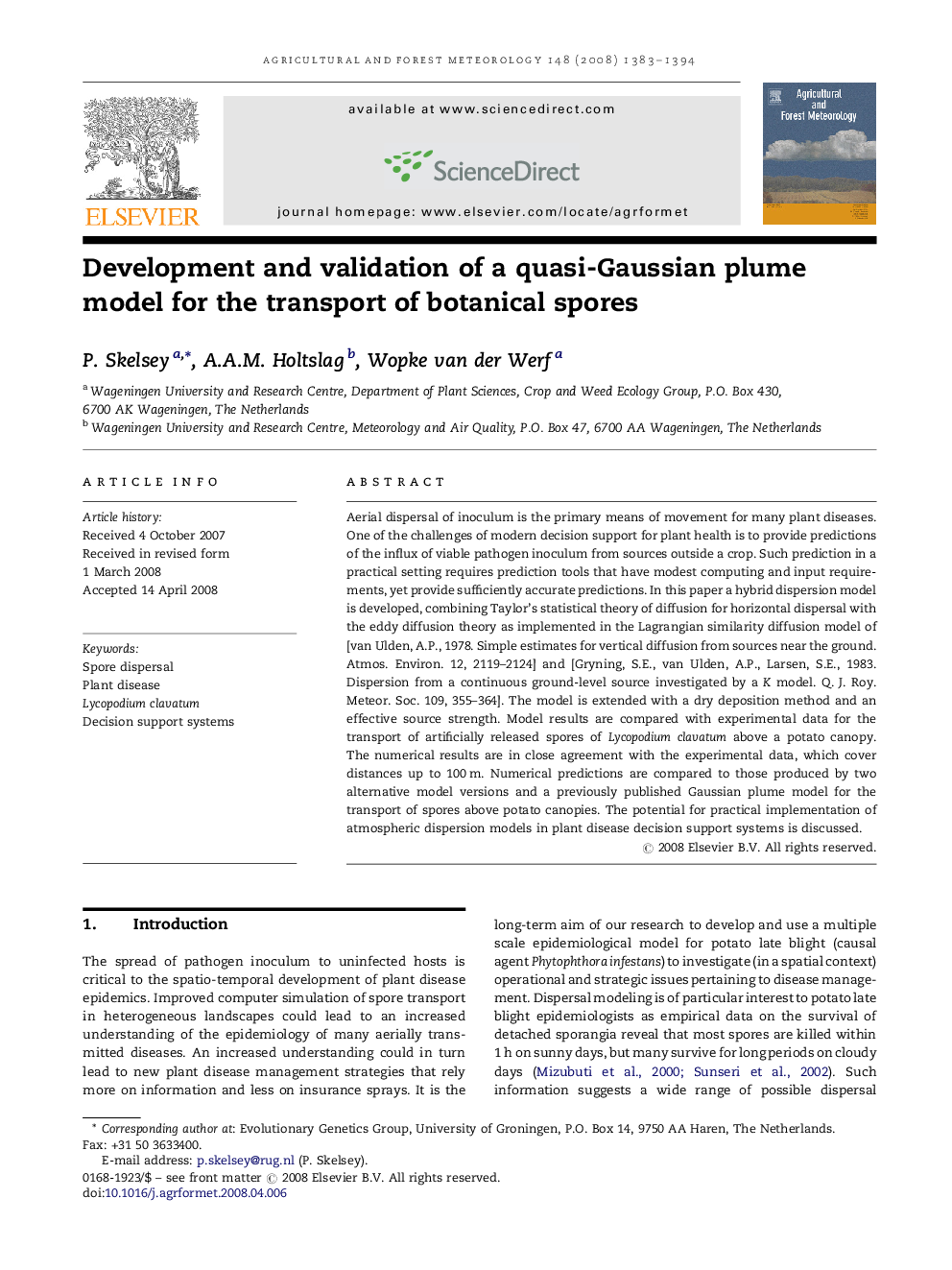| Article ID | Journal | Published Year | Pages | File Type |
|---|---|---|---|---|
| 82516 | Agricultural and Forest Meteorology | 2008 | 12 Pages |
Aerial dispersal of inoculum is the primary means of movement for many plant diseases. One of the challenges of modern decision support for plant health is to provide predictions of the influx of viable pathogen inoculum from sources outside a crop. Such prediction in a practical setting requires prediction tools that have modest computing and input requirements, yet provide sufficiently accurate predictions. In this paper a hybrid dispersion model is developed, combining Taylor's statistical theory of diffusion for horizontal dispersal with the eddy diffusion theory as implemented in the Lagrangian similarity diffusion model of [van Ulden, A.P., 1978. Simple estimates for vertical diffusion from sources near the ground. Atmos. Environ. 12, 2119–2124] and [Gryning, S.E., van Ulden, A.P., Larsen, S.E., 1983. Dispersion from a continuous ground-level source investigated by a K model. Q. J. Roy. Meteor. Soc. 109, 355–364]. The model is extended with a dry deposition method and an effective source strength. Model results are compared with experimental data for the transport of artificially released spores of Lycopodium clavatum above a potato canopy. The numerical results are in close agreement with the experimental data, which cover distances up to 100 m. Numerical predictions are compared to those produced by two alternative model versions and a previously published Gaussian plume model for the transport of spores above potato canopies. The potential for practical implementation of atmospheric dispersion models in plant disease decision support systems is discussed.
